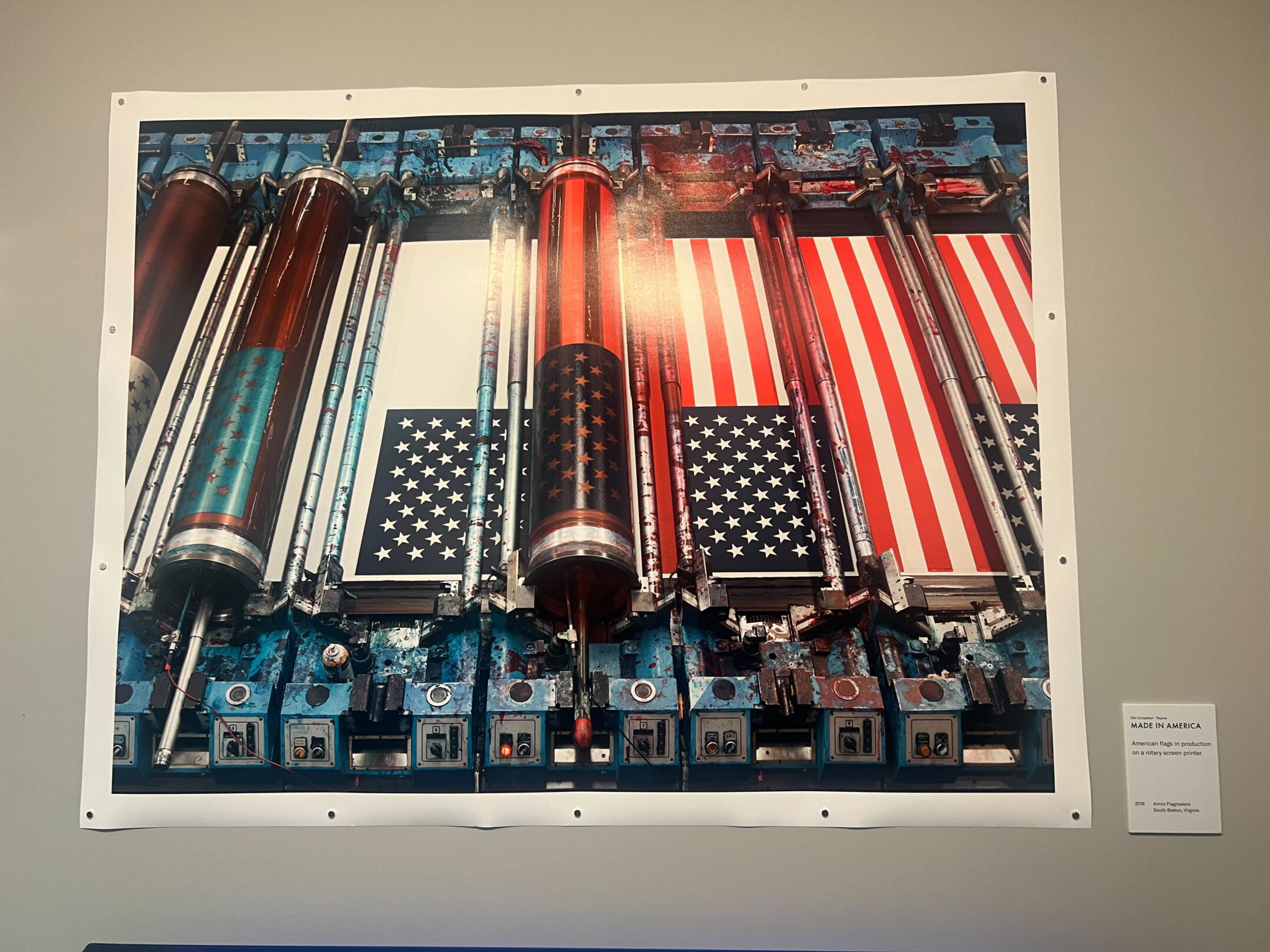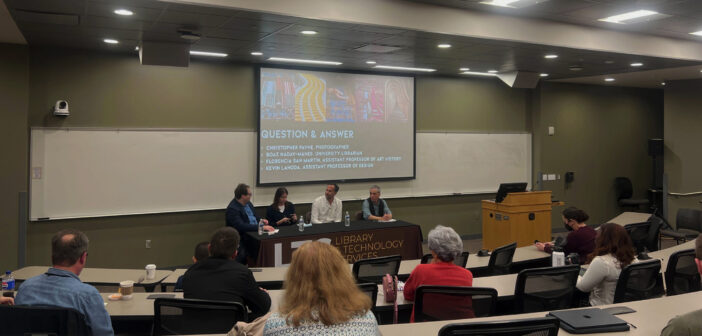Christopher Payne, an acclaimed photographer and author known for his work on American manufacturing, visited Lehigh to reflect on the themes of his second book, “Made in America,” and display his work. His photography is exhibited on the sixth floor of the Fairchild-Martindale Library until January 2025.
Payne’s photographs highlight Bethlehem’s industrial heritage, with a focus on its historical connection to steel production.
Despite the common perception that many products are manufactured overseas, Payne said a significant portion is still made in America. His narrative invites viewers to reflect on the complexities and evolution of American industry, shedding light on the often-overlooked stories behind everyday products.
Payne said he aims to foster a deeper appreciation for the manufacturing process by capturing the intricate relationships between labor, machinery and community.
“Whenever I give a talk, I’d like the audience to come away with an appreciation for how things are made and how all the things that we rely on have an origin somewhere,” Payne said.
Payne’s exhibition was designed to display his art and create a connection between the audience and the industrial themes represented in his work.
Kevin Lahoda, an assistant professor of design, said he’s one of Payne’s close friends, and he encouraged him to exhibit at the university.
“(Payne) has a unique way of engaging with the subject matter,” Lahoda said. “His approach to photography is not just about capturing images but telling stories about the places and people (in) them.”
Payne’s exhibition features a presentation style that uses magnets to hang unframed prints. He said this choice creates a casual yet impactful viewing experience, inviting students and faculty to intimately engage with the photographs.
“It’s always better to see the work in person,” Payne said. “I try to underscore the importance of tangible engagement with art.”

A photo from Christopher Payne’s “Made in America” exhibit is pictured on the sixth floor of the Fairchild-Martindale Library. Payne held a discussion and viewing of his exhibit Oct. 23. (Juila Cassone/B&W Staff)
The exhibition is intentionally arranged to present a narrative arc that guides viewers through the evolution of American manufacturing. Attendees walk in a counterclockwise direction, experiencing a progression from traditional manufacturing to modern innovations.
This arrangement encourages viewers to contemplate the journey from the past to the future, which Payne said reflects the changes within the American manufacturing industry.
Boaz Nadav Manes, the university librarian, helped organize the exhibition. Nadav Manes said the idea to showcase Payne’s work in a timeline arrangement emerged organically, reflecting a collaborative spirit throughout the planning process.
Nadav Manes used his photography background to offer insights into the selection and arrangement of the photos.
“(Payne’s) art and his talk were very much aligned with the idea of how technology serves people and communities, and the changes those technologies bring along with them,” Nadav Manes said.
Nadav Manes said Payne’s distinct perspective on the relationship between technology and its social implications, particularly in light of current concerns surrounding AI and industrial innovation, emphasizes the importance of human connection in photography.
“Quite often, the people working in those factories are not necessarily feeling confident to speak up about what they do, and it takes (Payne) a while to create a connection with them,” Nadav Manes said.
Payne said his intention was to illustrate the human element behind industrial photography, and he strives to bring those voices to the forefront.
“I just hope that people take the time to walk around because it’s really like a story,” Payne said.
The exhibition serves as a testament to how photography can connect people to their history and to one another, which he said can remind viewers of the vital role human connection plays in an increasingly industrialized world.
Payne said he encourages everyone to appreciate the beauty and complexity of American industry and said every product has a story waiting to be uncovered.






Comment policy
Comments posted to The Brown and White website are reviewed by a moderator before being approved. Incendiary speech or harassing language, including comments targeted at individuals, may be deemed unacceptable and not published. Spam and other soliciting will also be declined.
The Brown and White also reserves the right to not publish entirely anonymous comments.